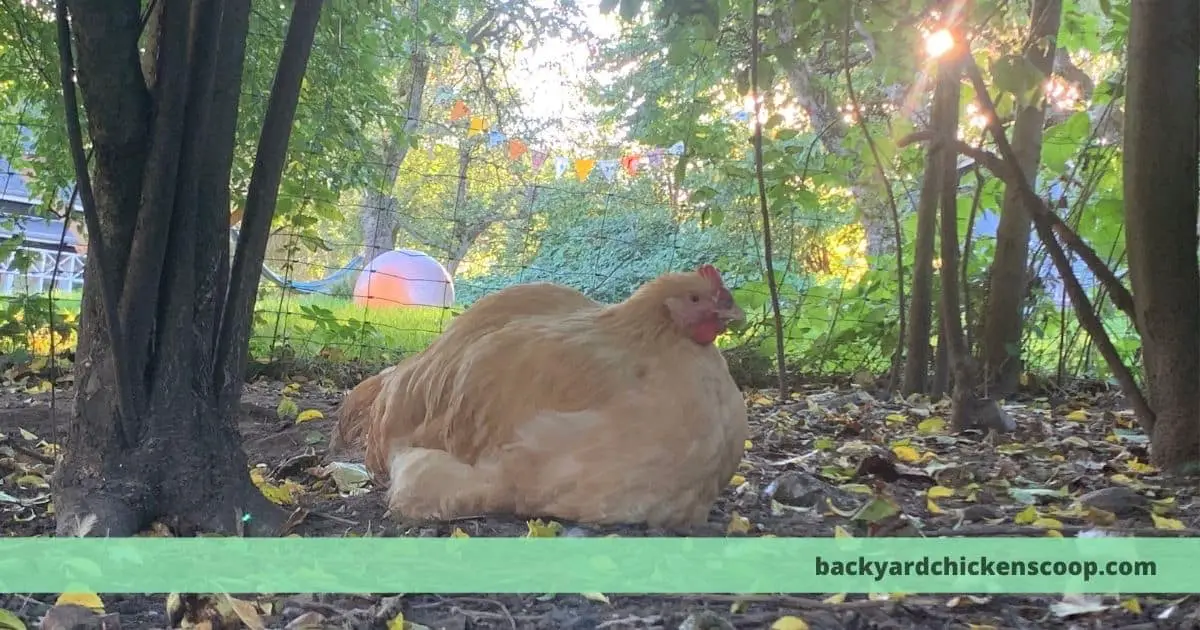Having chickens in your backyard can be a real blessing, especially if you like collecting fresh eggs. However, the issue of how much light is needed to have effective egg laying is always a big question. Take your time and review the top FAQ about why do chickens need light to lay eggs.
How much light affects chickens laying eggs?
Since chickens are at work collecting food, they spend much of their time in the sun during the day. Sunlight will increase egg production in Hens, so normal daylight hours will be just fine. But this changes during the year from season to season. You’ll notice that the winter months are shorter on daylight than the spring and summer months.
Because of the longer daylight hours, Hens will produce more eggs as a result. You can expect fewer eggs in the winter months likewise. Your Hens need to have consistency when laying eggs, so through the year, they’ll adjust to the seasons. With that said, they’ll need a minimum of 16 hours of sunlight with 8 hours of roosting time. As winter approaches you’ll see that 12 hours of light slows them down much more.
To correct this problem you need to install an incandescent light inside the coop. It needs to be set on a timer to make up for the sunlight differences. As long as they get 8 hours of darkness, the timer should be set to wake them up. This can help fill in for the lost summertime hours and their egg production won’t suffer as a result.
Do chickens need light to lay eggs?
They do since the daylight hours are the key to laying eggs for a very simple reason. Your Hen’s biology starts with the Pineal Gland that’s located on a Hen’s midbrain. This is the gland that produces melatonin, and it also regulates sleep and body functions. When a Hen is outside in the sun, the Pineal Gland responds and sends hormones to your Hen’s ovaries.
That’s the scientific reason why chickens lay eggs. However, when sunlight is shorter in the fall and winter months, the result is also normal. Yet your Hen can be tricked into thinking there is no change in daylight hours! It all starts with a general 40-watt bulb. You won’t need a higher wattage since the ‘trick’ comes directly from the incandescent filament itself. The color spectrum is nearly the same as the Sun, after all, it’s a burning bright filament.
You may also use an LED light instead. These new bulbs can also deliver the same light spectrum that’s beneficial for Hens to ovulate. You can read more about this brand of lighting n the next section. Since the energy savings can’t be beaten and lessens your outgoing costs to raise chickens on your own. It’s also a great way to be more environmentally green and reduce your carbon footprint.
Fall and winter morning hours that are still in darkness can be corrected easily with a timer that tells your Hen it’s morning time. Because these Hens can be tricked into thinking there is no season change, they continually lay eggs as usual. Just be sure you choose a light timer that you can quickly adjust to the seasonal light changes.
What kind of light do I need to lay my chickens?
While most people will use an incandescent light bulb, it’s been proven to work. However, the new advances in LED light bulbs present a cost-effective solution. The light from most LED’s was limited in the past, and bulbs were expensive. Now through with super bright LEDs being more popular than ever, colour temperatures are also available. You’ll need to look for a 4000K 4-5 watt bulb.
This will yield the same colour temperature as incandescent and cut back your electric bill too. LED lights work better in the winter, so be sure to install spot lamps outside the chicken coop as well. It’s purely so they can meander around the coop until the sun starts to come up. The 4000K colour spectrum is closest to the natural lumens of sunlight which gives off a nice warm colour.
Since the LED light will last thousands of hours longer than your incandescent lights, you’ll save even more money. There have been debates over the years about which is the best light to use. So the traditional incandescent or LED will always be argued upon. If you want to save yourself a lot of bulb changes, in the end, pick the LED bulbs instead.

Do layers need light at night?
As long as your chickens get 8 hours of roosting time, this is the only time when it can be dark. The light timer should only be programmed to go on when you need to wake up your Hens. It’s not hard to understand that chickens react to any kind of light if they sense it. So to produce a healthy supply of eggs throughout the year, Hen’s need to get their rest.
The timer light is only needed to supplement the daylight differences that happen normally as seasons change. You’ll immediately notice a difference in egg production if they don’t get enough sleep or not enough daylight hours. Keeping a coop that’s nice and dark is fine for them since they’ll only roost when the sun goes down. Even on hotter days, they might just rest in the shade, that’s no problem.
Only when chickens have gotten 16 hours of sunlight or fill-in light, they ready for 8 hours of rest afterwards. That’s just a healthy way to keep Hens regulated to the same level all year-round. And if you like that dependency on eggs each month; keep this schedule, to enjoy the benefits coming with it.
Should my chicken coop be in the sun or shade?
First of all, chickens are not exceptional for showing their emotions and feeling. They’ll get excited when other animals threaten them, or from the sound of the neighbour’s lawnmower. Some might say that a chicken is better than a dog since they sense danger a lot faster than dogs. You might be surprised to know that chickens aren’t as dumb as we previously thought.
This is exactly why you should know about coop placement. Hens need to lay healthy eggs, and a mother Hen needs to be stress-free. How does this all relate? If you put a chicken coop in the direct sun, it can get hot in there. Ovulating Hens will sense there is something wrong with a hot and balmy henhouse and will lay fewer eggs. So you have the responsibility to keep them cool and content.
Find a spot where the sunlight doesn’t hit the coop but is warm enough at night for them to sleep. If you’ve done some research about building your coop, you’ve already seen great DIY videos on Youtube. Find a spot that doesn’t make your chicken coop a pressure cooker during the daytime. KFC already knows how to cook fried chicken faster, so avoid direct sunlight at all costs. Try a modest approach with 25% of the coop being exposed at any time of the day.
Does rain affect chickens laying eggs?
In this case, it all depends on where you live and what kind of weather you typically get. If you live in dryer states like Texas or Arizona, you’re going to see less rain. Oregon and Washington State are typically rainy due to their average rainfall too. All these factors combined will tell you that clouds are going to block the sun that chickens need.
To solve this problem you need to be prepared to solve any light problem that blocks sunlight around your coop. As mentioned before, LED lights are the perfect solution to give Hens the proper amount of sunlight they need. Have an area that Hens can stay out of the rain, but still get a light that shines on them. Some outdoor spotlights fitted with 10 watts LED lights with a 4000K color rating will solve this problem.
Be sure that these spot lamps are waterproof or made for outdoor use only. Have a flip switch installed so you can turn the lights on even for extra cloudy or foggy days. The low wattage LED’s will do their job to keep your Hens thinking it’s still nice and sunny. The only problem is that you can’t predict the weather, so perhaps you can install an outdoor video camera. The newest apps allow you to watch continuous live feed via your smartphone.
There’s also a smart app that can allow you to control your house lighting from your phone too. If you aren’t at home when it starts to rain, you can use smartphone controls to fix this problem. A recent study showed that smartphones are more commonly used for agriculture and farming. The recent rise of remote drones showed that harvesting fruits are easier through inspecting fields robotically. Why wouldn’t this technology be perfect to keep your Hens producing eggs all year long?
In conclusion
We hope that this information helped you further with tips and answers that help you raise chickens in your backyard. The first thing you’ll want to know when asking: why do chickens need light to lay eggs’ is perhaps finally answered.


